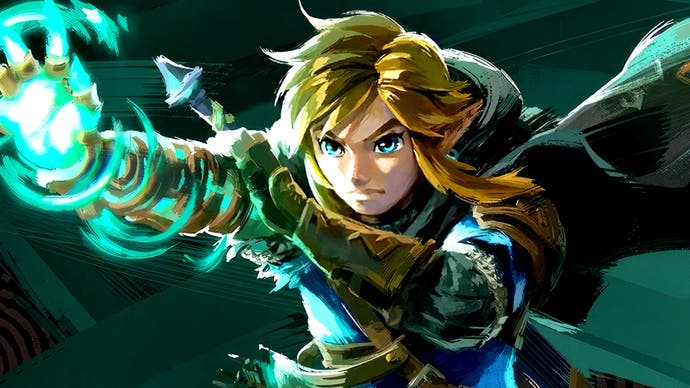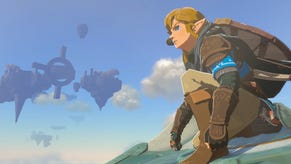The Legend of Zelda: Tears of the Kingdom - the Digital Foundry verdict
Is it really 'too big for Switch'?
The Legend of Zelda: Tears of the Kingdom arrives in a turbulent time for gaming. As new releases continue to debut with a range of technical hiccups, the excitement of diving into a brand-new game has become increasingly muted. Even Nintendo-published titles, such as the recent Pokémon games, have had unfortunate technical flaws. So, when the latest entry in the Zelda series promises to be bigger and better than ever before, scepticism is warranted, at least when it comes to technical performance. Worry not - despite some troubling preview footage with clear performance problems, the day one experience for Tears of the Kingdom is excellent overall - and it's not 'too big for Switch'.
Going into this one, I was also interested to see what kind of Zelda game this would be, bearing in mind its surface-level similarities compared to Breath of the Wild. The Legend of Zelda series is known for constantly reinventing itself - finding new, interesting ideas to push the medium forward. The task of making a sequel to one of these games is an unenviable one - the weight of expectation and historical importance cannot be understated, and as a result, direct sequels in the series have remained rare.
There are exceptions, however, and they are generally well regarded - The Legend of Zelda: Majora's Mask and The Legend of Zelda: A Link Between Worlds both follow in the footsteps of their highly successful predecessors, while also offering fresh new ideas that have captivated fans of the series everywhere.
Such is the case with Tears of the Kingdom. Make no mistake, this is a direct sequel to 2017's Breath of the Wild, but contrary to some concerns, this is not a retread. Tears of the Kingdom builds on a strong foundation and takes the concept to the next level. It's bigger in all the right ways, with more carefully designed sequences and environments to explore, satisfying my desire for proper Zelda dungeons with real level design. You'll revisit Hyrule, but there's so much more, both above and below.
This is one of the major changes in game design - Breath of the Wild focused exclusively on the lands of Hyrule, but Tears of the Kingdom takes the player up into the sky to explore beautiful floating ruins and below the surface into a subterranean region. The game world remains just as dynamic - wind blows, fire burns, and light bounces - but new features enhance the already gorgeous presentation. A new procedural cloud system has been implemented to better support the skies you'll be exploring. Much like Breath of the Wild, Tears retains volumetric lighting and light scatter, often using them to great effect, while inclement weather can be startling. The feeling of being caught in a thunderstorm with lightning that casts shadows with each strike creates a powerful mood.
Frankly, what makes this game so impressive is the scope, fidelity and interactivity, all on a portable system. Link can travel seamlessly from the ruins of the sky to the surface below with no loading screens or major hiccups. The world has a dynamic time of day, something I'm not always a fan of, but it works well here, especially when combined with actual bounce lighting via radiosity. Everything is governed by realistic physics simulation. The wind simulation is impressively robust, affecting objects around the world to varying degrees based on their material properties and weight. This was already present in Breath of the Wild, but it's honestly one of the best implementations I've seen in a game of this size.
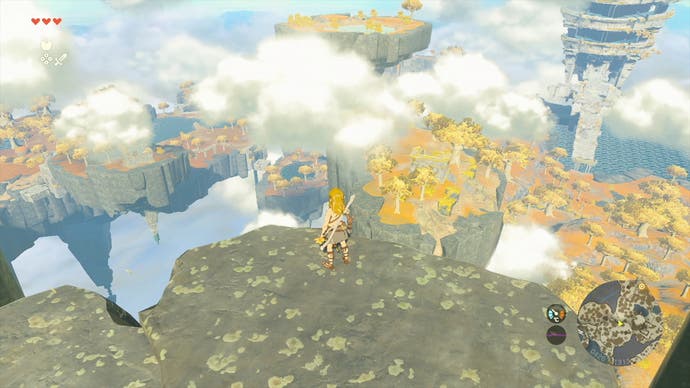

New to Tears of the Kingdom is the Ultrahand feature - expanding on concepts from Breath of the Wild, this new power allows Link to physically manipulate objects in the world and fuse them together to create larger objects. Combined with the new Zonai devices, you can build all sorts of contraptions, all controlled by the game's physics system. I feel like I've only scratched the surface, and I'm curious to see what others will build when the game is released.
The thing that really makes Tears of the Kingdom and its predecessor so special is the interplay between all these different systems. Just the basics - grass reacts to Link, but Link can also swing his sword to cut it down, in the Zelda tradition. If you build a fire and then light your torch, you can set plants ablaze. And what about those trees? You can run up to them, chop them down, and the resulting log will roll downhill, controlled by the game's physics simulation. Drop it into a body of water and it will float. The same trunk can also be used to create vehicles if you wish.
This is all basic cause and effect in action, but it's not particularly common in most open-world games. Running around in The Witcher 3, for example, which is a very different game, Geralt's movement has no effect on the grass, if you cut a tree it will never fall, and random objects in the environment lack any kind of physics simulation. This is the norm for open world games. Simulating all these elements is taxing and I'm surprised Nintendo was able to pull it off at all.


This brings us onto the topic of performance. Tears of the Kingdom is similar to its predecessor in many ways, but takes some steps to improve the overall presentation. 900p remains the primary goal in docked mode, but this time Nintendo seems to be using AMD's much-maligned FSR1 spatial upscaler to reach 1080p, complete with mild contrast adaptive sharpening. As a result, if you look closely, the image appears slightly sharper than the previous game but with subtle edge ringing.
What makes this interesting, however, is how the dynamic resolution manifests itself. In some scenes, for example, the game changes its internal resolution based on the camera's speed. For example, if you rotate the camera in place, you may notice a change in the sharpness of the scene if you look closely. That's because the resolution drops to circa-720p when the camera is in motion but jumps back up to 900p as soon as it stops. It doesn't always drop, mind you, but it's certainly a common occurrence. The same is true in portable mode where the max res seems to be 720p - the game looks exceptionally nice on the Switch OLED.
One element of image quality I also want to mention are the cutscenes - while most sequences are rendered in real-time, larger sequences are entirely pre-rendered. In this case, the quality of the video is exceptionally poor with severe macroblocking and visual noise. The low quality FMV nearly spoils these scenes entirely. I'd imagine Nintendo opted for video in these scenes due to both the need for rapid cuts between different areas of the map and for the more advanced VFX. Still, when in real-time, image quality is sufficient. This is the Switch, after all, and there was never a chance Nintendo would be hitting native 1080p in a game like this. Image quality is significantly better than most other attempts at a large open world on Switch, at least.
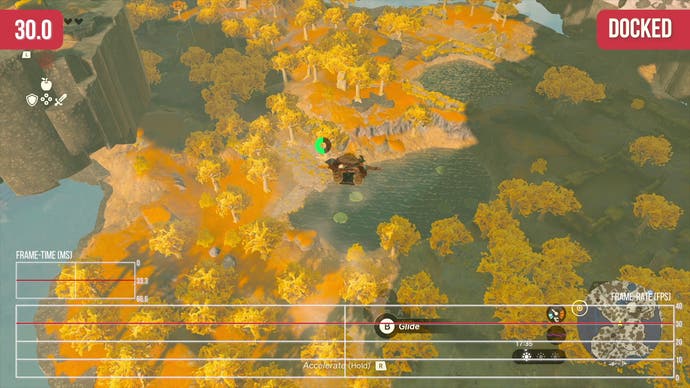
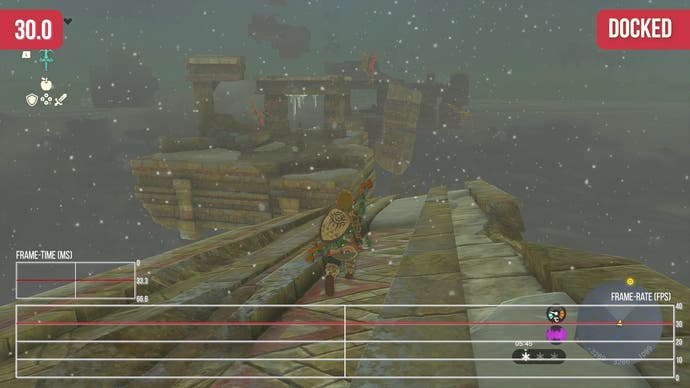
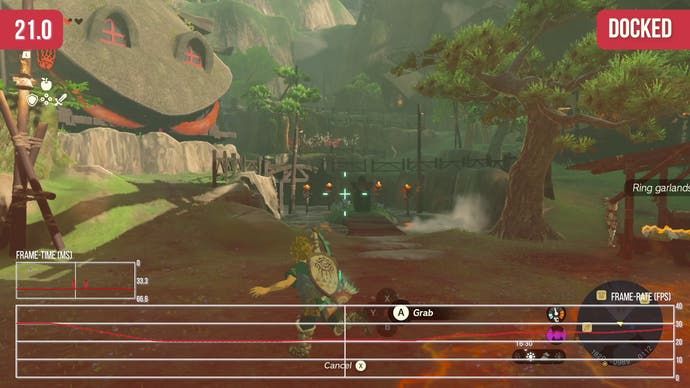
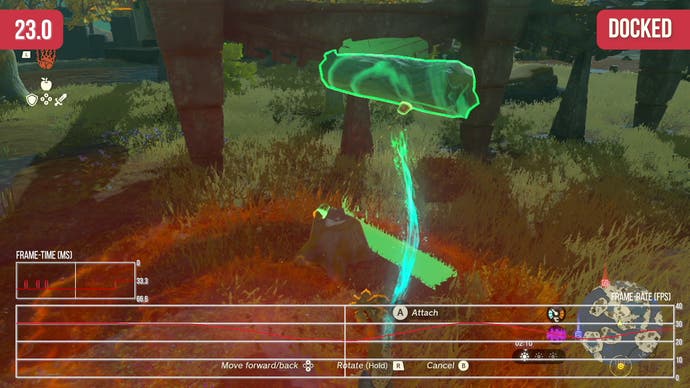
Of course, how it performs is perhaps most important and the result is unexpected. When the initial previews were released, it was clear that the frame-rate wasn't completely stable and, after first downloading the review build of the game, this was consistent with my experience. Even during the game's intro sequence, the frame-rate constantly dropped to 20fps thanks to a double buffer v-sync. It occurred often enough that I would have considered it a huge problem. Then, a patch dropped. Now, I don't often expect much from patches these days - performance promises rarely pan out, after all, but in this case, it's a game changer.
Nearly every instance of major performance loss has been corrected resulting in a game that holds very closely to its 30fps target. The majority of my entire run of capture managed to maintain a solid 30 frames per second in most instances which, for the Switch running a game this vast and emergent, is impressive. It's not 100 percent perfect, however, and I found ways to trigger a drop in frame-rate.
In most instances, it's the result of using the Ultrahand feature. When you toggle this in a busy area, the frame-rate is sure to dip and, when it does, it drops to 20 fps - again, thanks to the use of a double buffer v-sync. The performance reminds me of an old school game in some ways - slowdown only occurs in busy scenes, similar to how a shooter might start slowing down when the action heats up. And like those games, Zelda is smooth in terms of frame-pacing and lacks any significant stutter or hitching.
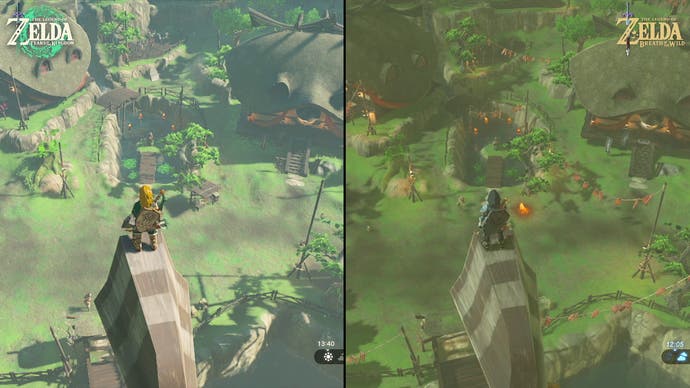
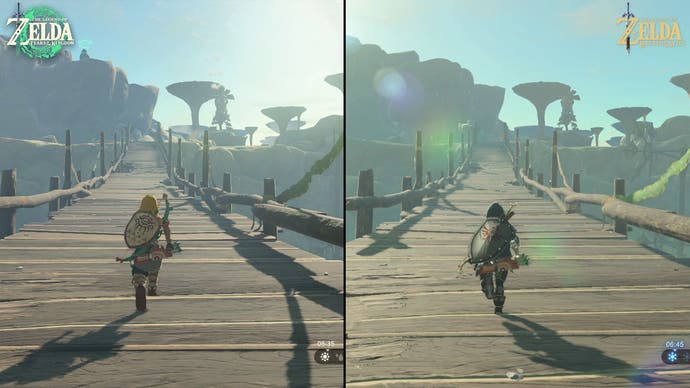

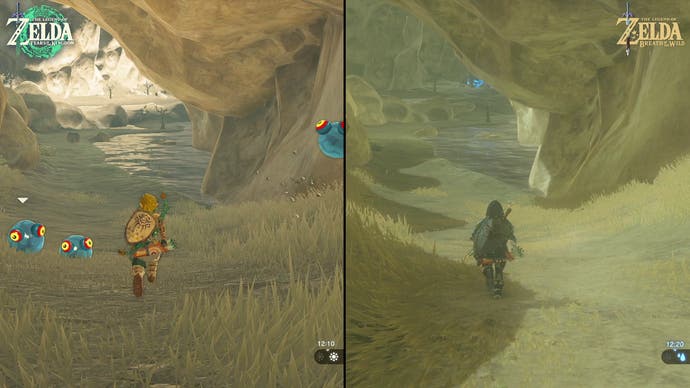
Comparisons with Breath of the Wild are intriguing. Nintendo has opted to build on the work done in Breath of the Wild rather than redesign everything for a sequel - something they also did with Majora's Mask. The improved cloud system is new and welcome, while the world above is visible through the surface of Hyrule, which is nice. Most of the rendering improvements we had anticipated based on older trailers have not really materialised in the end and it winds up feeling largely familiar. The most significant visual improvements are all found in the lands of the sky and the underground, neither of which exist in Breath of the Wild.
The first thing I noticed was the change in the position of the sun. Even when the time is synchronised between the two games, the position of the sun is different. I also get the impression that LOD distance is expanded slightly in the new game, with a longer draw distance. The increased sharpness is also visible despite the similar pixel count - which may be a factor of the FSR pass. One benefit I noticed is a slight boost to loading times when using the fast travel feature. In most cases, Tears of the Kingdom seems to load slightly faster which might perhaps be the result of optimisations related to the larger world.
Another thing to note is that Tears of the Kingdom makes full use of 5.1 surround sound, something you can never take for granted on Switch. This is especially important given the environmental focus. The sound of rustling trees with soft piano notes echoing out is immensely satisfying. The soundtrack is also phenomenal, building on the work started in Breath of the Wild. This is easily one of the most sonically pleasing games in the franchise.
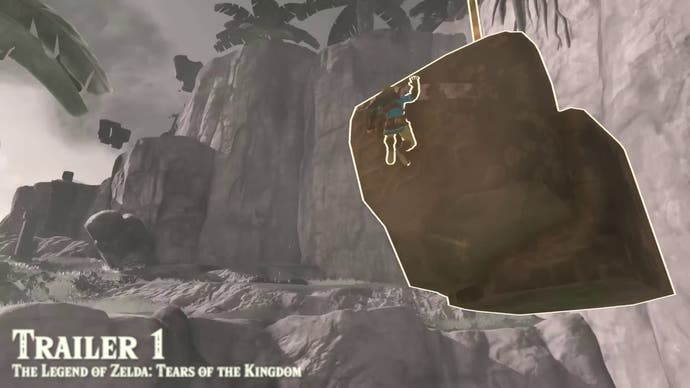

So, with all that said, I think we have a solid picture of Tears of the Kingdom's state for launch. Given the power or lack thereof available to Switch developers, I think it's fair to say that Nintendo has delivered an impressively polished, complete game that looks and runs better than I expected. In fact, aside from the pre-patch performance woes, the experience with Tears of the Kingdom has been exceptionally positive. I encountered no bugs or unexpected behaviour despite the complexity of its simulation, and it all feels so meticulously crafted. With the state of so many big games these days launching in an unfinished state, playing something this polished and complete on day one is extremely satisfying.
Also, without going into too much detail, I will say that the game itself surprised me. Breath of the Wild is extremely well made but, honestly, I did not enjoy it nearly as much as others. Large open worlds just don't do it for me and it felt like it was too heavily focused on that aspect. Tears of the Kingdom retains this element but all the new scenarios you'll play through feel more crafted in a way that the Titans never did. I don't want to reveal more but let's just say they take things a lot further this time and that's kept me going.
If we circle back to the beginning, it's fair to say that Tears of the Kingdom is, in fact, not too big for Switch but at the same time, it doesn't quite measure up to those original trailers either - something we can't ignore. That's why I'm of two minds on the final release - it's remarkably impressive for the Switch hardware but at the same time, I would have loved experiencing this on a more powerful machine. Clearly that's not in the cards right now but perhaps Nintendo will deliver at some point in the future once the next generation Switch finally arrives.
